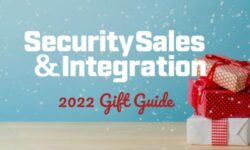Grounding 101: Tips, Resources & Best Practices
Tech expert Bob Dolph drills down on the concepts of grounding and its many types, as well as advice for lightning surge suppression.

(Image: imray/stock.adobe.com)
Every essential skills repertoire should begin with a firm foundation. In this case I am referring to ground. Small word, but a very important concept for every serious professional systems technician. This month we are going to build on our essential skills library by drilling down and understanding the concepts of ground.
You will first notice that I have been somewhat vague about the term ground. That is because there are many types of grounds. Earth ground is physical connection to the earth itself. This can either be a ground rod or some other buried metal conductor.
All grounds theoretically are at zero volts. The third, middle round prong in an electrical outlet is considered earth ground. The large flat prong is considered the neutral connection; however, it is actually connected to ground in the facility for electrical safety.
If you have equipment with metal enclosures they will typically be connected to earth ground. This will protect anyone from being shocked from a wiring error.
Equipment should be grounded at a common point in the facility to avoid what is referred to as ground loops. Circuit ground is the common connection in electronic circuits. This can be for both digital and analog circuits. Care should be taken as analog signals can interfere with digital signals.
Ground symbols can be confusing because some are different and can mean the same, and some are the same but can mean different. It is best to know the purpose of the type of ground you are working with and the rest will fall into place.
Since we are in this arena you may have heard the term bonding. Bonding joins noncurrent-carrying conductive materials, such as cabinets and raceways, in order to establish an effective ground-fault path.
There are some good, free online references for learning more about grounding and bonding. I would recommend starting with the free Mike Holt video series, “Electrical Safety Fundamentals.” Old-timers may even find it a good review. Another good Holt video is “Understanding Utility Neutral-to-Earth (NEV) AKA Stray Voltage.”
Yes, much of what we do is in the low-voltage world, and one might ask, “What does high-voltage and utility power have to do with me?” Well for starters, if grounding and bonding is not performed properly it can seriously affect the performance of your system with things like audio hum or signal interference.
Now is a good opportunity to take the time to understand and master these grounding concepts. After all, it is in the NEC code (Article 250) as well.
Once a proper grounding system is in place, then we can discuss the important function of lightning surge suppression. No one knows lightning protection better than residents of Florida, including yours truly.
I would like to point out Ditek, a surge protection solutions manufacturer that has been based in Florida for more than 30 years. Being the experts they are, I thought I would relay some of their advice on what are best practices.
- Most surge protection plans begin from the outside and work in. While outside devices such as cameras are in danger from lightning, it is the inner heart of the system that needs planned surge protection as well. Surges may also not come directly from lightning.
- Grounding is the first line of defense when it comes to surge protection. Centralized grounding is very important. It can help reduce interference and line noise, improve power factors, reduce the risk of accidental electrocution and help decrease potentially damaging harmonics.
- Make sure the SPD is properly installed. An improperly installed surge protection device (SPD) will not perform at maximum efficiency. Proactive measures are strongly encouraged for security systems and fire alarm panels. Installation of SPDs should be done by professionals and not DIY personnel. The conductor length between the SPD and protection equipment should be a minimum of 3 feet. This allows for the SPD to react and protect the equipment. Protected and unprotected wires should be in separate conduits. Install a solid metal grounding bus bar.
- Be aware of additional sources of power surges. Establish plans to mitigate outside power surges and spikes. Some potential threats are wired connections to outdoor cameras, signaling and notifying circuits in fire alarms systems, phone lines connected to fire and security control panels, ATMs, and point-of-sale devices. A suggestion is to simply install SPDs on both ends of wire runs.
I would like to finish up with a couple personal comments and observations on lightning protection. The debate goes on, should I ground my alarm equipment or not. If I ground the panel it will go through planned SPDs, but may likely attract more surges.
If I float my panel I might attract less surges, however, surges my go through sensors. I have seen magnetic reeds welded shut from a lightning surge. The irony is they weld shut, so no real alarm will happen at that sensor.

Tool of the Month
This month I have selected the new DTK-120X12 SPD solution from Ditek for fire alarm systems. It can connect up to 12 low-voltage circuits.
Status of circuits can be monitored by dry contacts. Onsite field replacement modules makes for an easy service call.
If you enjoyed this article and want to receive more valuable industry content like this, click here to sign up for our FREE digital newsletters!

Security Is Our Business, Too
For professionals who recommend, buy and install all types of electronic security equipment, a free subscription to Commercial Integrator + Security Sales & Integration is like having a consultant on call. You’ll find an ideal balance of technology and business coverage, with installation tips and techniques for products and updates on how to add to your bottom line.
A FREE subscription to the top resource for security and integration industry will prove to be invaluable.








